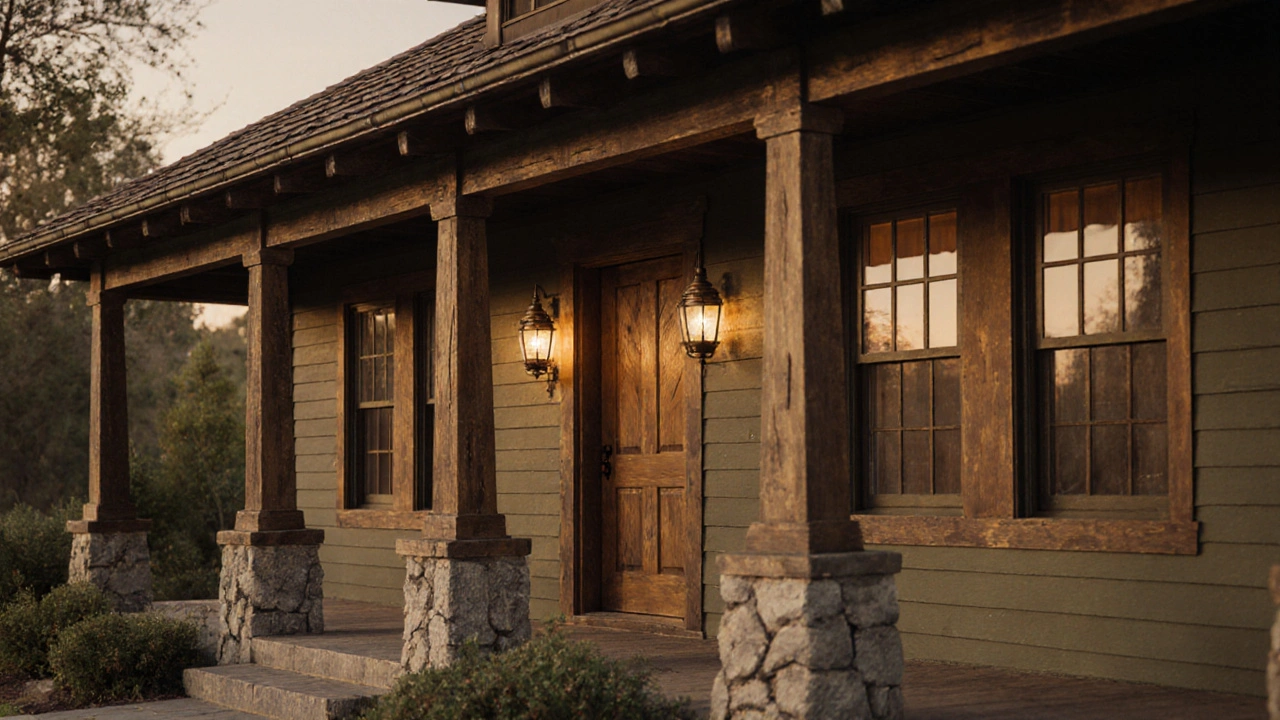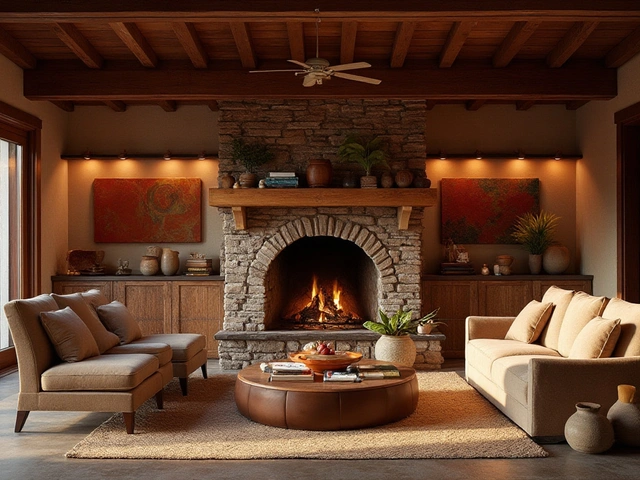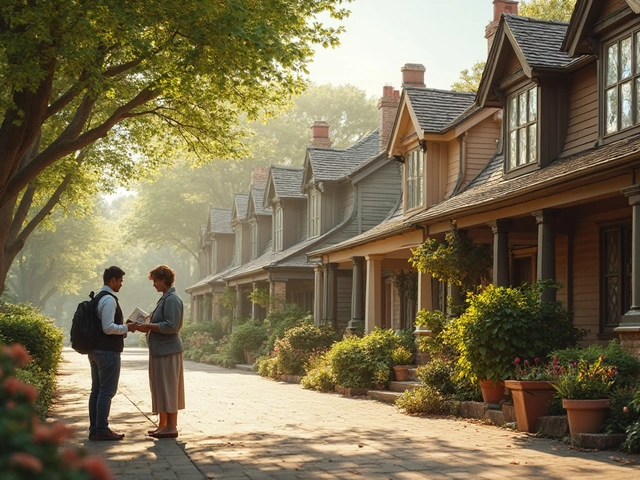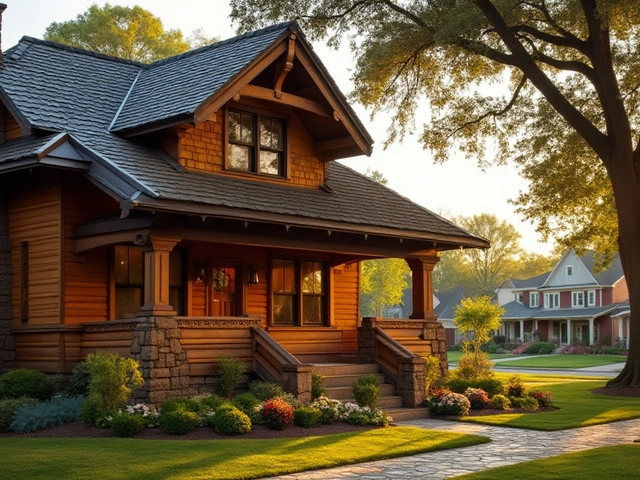The American Craftsman style isn’t just a look-it’s a promise. Built between 1905 and 1930, these homes were designed to last, made by hand, and meant to feel like they belonged to the people who lived in them. You can still see them today in neighborhoods across the U.S., from bungalows in Pasadena to porches in Chicago’s suburbs. What makes them stand out isn’t just the low-pitched roofs or exposed rafters. It’s the way they were built-with real wood, real nails, and real care.
What Makes a Home Truly Craftsman?
A true American Craftsman home doesn’t just copy a style-it follows a philosophy. The movement grew out of the Arts and Crafts movement in Britain, but in America, it became something more practical. Architects like Gustav Stickley and the Greene brothers didn’t just want pretty houses. They wanted homes that worked. That meant solid oak floors, not laminate. Hand-finished joinery, not cheap staples. Stone foundations, not poured concrete slabs.
Look at the details. The front porch is deep, often supported by thick square or tapered columns. These aren’t hollow fiberglass posts. They’re solid wood, sometimes with stone bases. The beams underneath are exposed, showing the grain and the craftsmanship. Windows are grouped in threes or fours, with divided panes-usually 6-over-1 or 4-over-1. The wood trim around them is hand-carved, not stamped out by a machine.
Inside, the woodwork tells the story. Door and window casings are thick, often 4 to 6 inches wide. Built-in cabinets, bookshelves, and benches are carved right into the walls. Fireplaces are massive, usually made of brick or stone, with wooden mantels that have been sanded smooth by hand. Even the light fixtures are different-bronze or copper, with stained glass shades shaped like leaves or flowers.
Why Durability Was the Point
In the early 1900s, most homes were built fast and cheap. Factory-made houses were popping up everywhere, using mass-produced parts and thin materials. The Craftsman movement pushed back. Builders believed that a home should be a lifetime investment. They used local materials-cedar shingles from Oregon, heart pine from the South, granite from New England. They didn’t cut corners because they knew the people living in these houses would notice.
Take the flooring. Most Craftsman homes have solid 3/4-inch oak planks, laid by hand over wooden subfloors. These aren’t engineered wood with a thin veneer. These are full-thickness boards that have been sanded and refinished multiple times over 100 years. Many still look great today. The same goes for the staircases. Treads are thick, with hand-carved newel posts and spindles that were turned on a lathe, not stamped. These aren’t just decorative-they’re structural. They don’t creak because they were fitted perfectly.
Even the nails were chosen carefully. Early Craftsman homes used hand-forged iron nails or cut nails with square heads. These hold better than modern wire nails and don’t rust as quickly. Many of these homes still have their original hardware-hinges, door pulls, and locks made of brass or bronze. They don’t need replacing. They just need cleaning.
The Difference Between Craftsman and Modern Reproductions
Today, you’ll see a lot of homes labeled as “Craftsman-style.” Many are built by developers who slap on a porch, add some decorative beams, and call it done. But real Craftsman homes don’t look like they were assembled from a kit. They look like they were grown.
Compare a 1915 Craftsman bungalow to a 2020 “Craftsman-inspired” build. The original has asymmetrical windows, uneven eaves, and a roof that slopes naturally to the ground. The modern version has perfectly aligned windows, identical trim, and a roof that looks like it was cut with a laser. The original used 12-foot-long beams that were milled on-site. The copy uses 8-foot prefab trusses.
Real Craftsman homes have imperfections-and that’s the point. No two shingles are exactly the same. The wood grain shifts with the light. The paint, often in earth tones like olive green, burnt umber, or deep ochre, has been layered over decades. These aren’t flaws. They’re proof of age, of use, of care.

How These Homes Were Built-And Why It Matters
Craftsman homes were built by skilled tradesmen who learned their craft through apprenticeships. Carpenters, masons, and blacksmiths worked together on-site. There was no project manager calling from an office. No subcontractor sending in a crew from another state. The same team built the foundation, framed the walls, laid the floors, and installed the windows.
They didn’t use power tools the way we do today. Saws were hand-operated. Planes were pushed by muscle. Nails were driven with hammers, not nail guns. This meant every cut was intentional. Every joint was fitted by eye and feel. The result? A house that breathes with the seasons. It doesn’t crack because the wood was dried slowly, in stacks, for months before use.
Modern builders talk about “energy efficiency” and “low maintenance.” Craftsman builders talked about “lasting.” They knew that a well-built home didn’t need to be replaced. It needed to be cared for. And that care was passed down. Grandparents taught their kids how to reseal the porch. Parents showed their teens how to clean the brass fixtures. These weren’t chores-they were rituals.
Why People Still Choose Craftsman Homes Today
Even in 2025, people pay a premium for original Craftsman homes. In cities like Portland, Oakland, and Savannah, a well-preserved Craftsman bungalow can sell for 30% to 50% more than a similar-sized modern home. Why? Because they’re not just houses. They’re artifacts.
People don’t just buy them for the look. They buy them for the feel. The way the light hits the wood in the morning. The sound of the floorboards underfoot. The way the front door closes with a solid thud, not a click. These homes don’t feel disposable. They feel permanent.
Restoration is a growing field. Companies now specialize in matching original wood stains, sourcing vintage hardware, and hand-sanding floors to preserve the patina. There’s even a movement to revive traditional joinery techniques like mortise-and-tenon and dovetailing in new construction. It’s not nostalgia. It’s recognition that quality doesn’t expire.
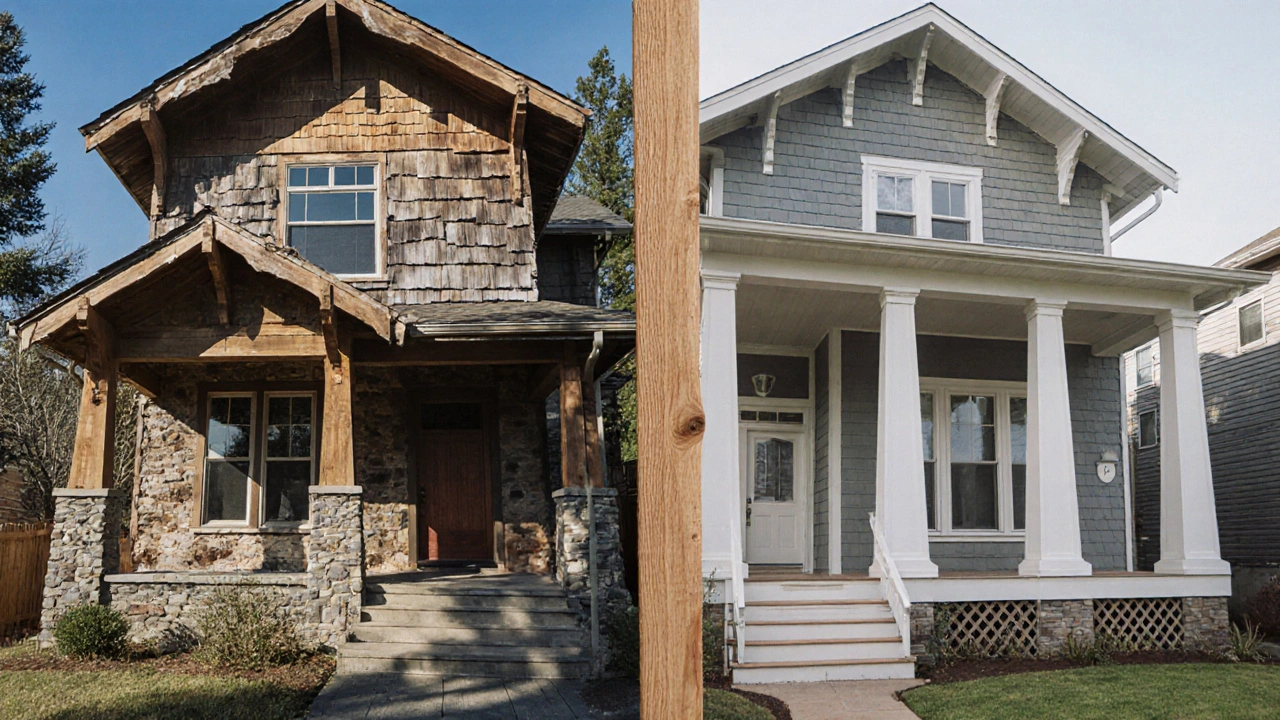
What to Look For When Buying or Restoring One
If you’re looking at a Craftsman home, here’s what to check:
- Foundation: Is it stone or brick? Concrete slabs are a red flag for originality.
- Walls: Are they plaster over lath? Drywall is a modern addition.
- Windows: Do they have divided lights? Are the panes hand-blown? Modern glass is too uniform.
- Woodwork: Is it solid wood? Run your hand along the trim. Machine-made wood has a smooth, uniform texture. Hand-finished wood has slight variations.
- Roof: Are the shingles cedar? Metal roofs were rare in original builds.
- Hardware: Are the door handles and hinges brass or bronze? Steel or plastic is a sign of replacement.
Don’t be fooled by “Craftsman-style” labels. Look for the details that can’t be faked. The craftsmanship is in the edges, the joints, the weight of the door. It’s in the way the house feels when you walk through it-not just how it looks.
The Legacy of the American Craftsman
The Craftsman movement didn’t just change architecture. It changed how people thought about home. It said that beauty isn’t in decoration-it’s in construction. That durability isn’t a cost-it’s a value. That a house built with care lasts longer than one built for profit.
Today, as we face climate change and disposable culture, the Craftsman ideal feels more relevant than ever. We’re starting to ask: What if we built things to last? What if we chose wood over plastic, handwork over automation, quality over speed?
The American Craftsman isn’t just a style from the past. It’s a blueprint for the future.
What defines a true American Craftsman home?
A true American Craftsman home features handcrafted woodwork, exposed structural elements like beams and rafters, deep front porches with tapered columns, built-in furniture, and solid materials like oak flooring, brick fireplaces, and stained glass windows. These homes were built using traditional joinery and local materials, prioritizing durability and craftsmanship over mass production.
How is a Craftsman home different from a modern "Craftsman-style" home?
Modern "Craftsman-style" homes often copy the visual elements-like porches and decorative beams-but use cheap materials like engineered wood, drywall, and vinyl siding. Original Craftsman homes are built with solid wood, hand-finished details, and traditional construction methods. The differences show in the weight of the doors, the grain of the wood, and the way the house feels over time.
Why are original Craftsman homes more expensive today?
Original Craftsman homes command higher prices because of their superior materials, craftsmanship, and longevity. Solid oak floors, hand-carved trim, and stone foundations can last over 100 years with proper care. Modern homes built with synthetic materials often need major repairs within 20-30 years. Buyers pay for durability, authenticity, and the unique character that machines can’t replicate.
Can you modernize a Craftsman home without losing its character?
Yes, but it requires careful planning. You can update plumbing, electrical, and insulation without removing original woodwork. Replace windows with energy-efficient replicas that match the original divided-light design. Keep original hardware or source vintage replacements. Avoid drywall over plaster walls and don’t cover exposed beams. The goal is to improve function without erasing craftsmanship.
What are common signs of poor restoration in a Craftsman home?
Poor restorations include vinyl siding replacing original wood shingles, hollow fiberglass columns instead of solid wood, drywall covering plaster walls, and machine-made trim with uniform patterns. Also watch for mismatched windows, painted-over original hardware, or synthetic flooring that looks too perfect. These changes strip away the home’s authenticity and reduce its value.

